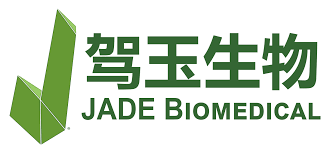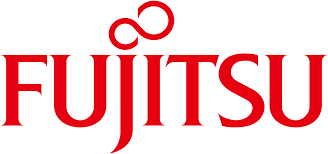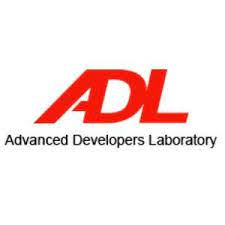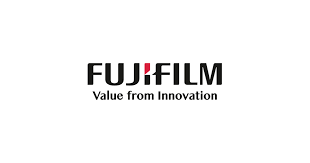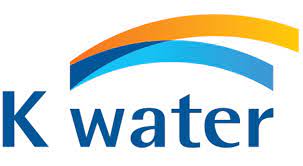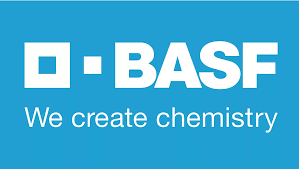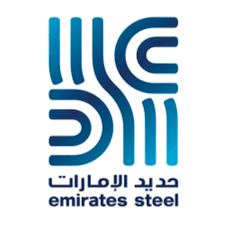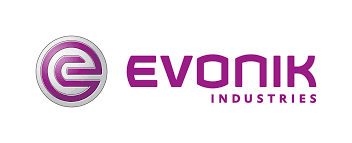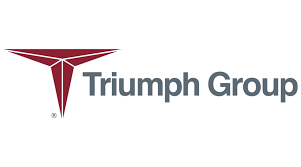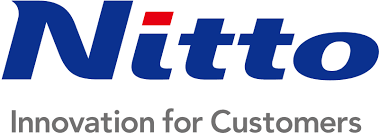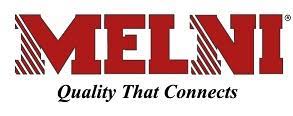Global Potassium Sulfate Market Size, Share & Trends Analysis Report, By Form (Solid, Liquid), by Purity (Up to 99%, Greater than 99%), by End User Industry (Agriculture, Industrial, Pharmaceuticals, Food and Beverages, Others), By Region (North America, Europe, APAC, and Others), and Segment Forecasts, 2023 – 2030
- Report Summary
- Table of Contents
- Segmentation
- Methodology
- Download Sample
Global Potassium Sulfate Market was valued at US $ 3.9 Billion in 2022 and is expected to reach US $ 6.4 Billion by 2030 growing at a CAGR of 6.3% during the forecast period 2023 – 2030.
The potassium sulfate market plays an integral role in both global agriculture and industry by serving as a crucial source of essential nutrients, namely potassium and sulfur. Its primary application as a fertilizer is instrumental in advancing crop growth, yield, and quality across a broad spectrum of agricultural produce, ranging from staple grains to specialized crops. Beyond its agricultural significance, potassium sulfate finds versatile utility in industrial sectors such as glass production, textiles, and detergent manufacturing, further underscoring its multifaceted importance.
The demand for potassium sulfate on a global scale is substantially shaped by factors including burgeoning population growth, escalating food requirements, and evolving agricultural practices. As the global population continues its expansion, the imperative for efficient and sustainable agricultural solutions becomes increasingly pronounced. Potassium sulfate, renowned for its low chloride content and environmentally conscientious attributes, seamlessly aligns with contemporary agricultural norms, mitigating the perils of soil salinity and adhering to stringent environmental regulations.
The potassium sulfate market is distinguished by its inherent variability, where supply and demand dynamics fluctuate in response to diverse influences encompassing weather patterns, economic fluctuations, and governmental policies. Key stakeholders in this dynamic market landscape encompass manufacturers, suppliers, distributors, and agricultural entities, all collectively contributing to the manufacturing, distribution, and promotion of potassium sulfate-based products. Concurrently, persistent research and development endeavors are dedicated to enhancing production efficiency, cost-effectiveness, and the exploration of novel applications and technologies. These endeavors are pivotal in ensuring that potassium sulfate perpetually aligns with the evolving requisites of agriculture and industry. In summation, the potassium sulfate market remains an ever evolving and indispensable component of the global food production and industrial sectors, fostering crop growth, quality, and productivity while satisfying a multitude of industrial demands.
Some of the benefits of designing a Potassium Sulfate include:
- Indispensable Nutrient for Plant Vitality: Potassium sulfate stands as a pivotal source of potassium, an elemental necessity for a myriad of physiological processes within plants. It assumes a central role in bolstering root growth, catalyzing photosynthesis, activating enzymes, and facilitating water absorption. This collective influence fosters robust and healthier crop development, ultimately translating into augmented yields and an elevation in crop quality.
- Wide-ranging Applicability: The versatility of potassium sulfate extends across an extensive spectrum of crops, encompassing fruits, vegetables, grains, nuts, and an array of specialized agricultural products. This all-encompassing compatibility renders it a prized fertilizer option for farmers tending to diversified crop portfolios.
- Elevated Crop Excellence: The integration of potassium sulfate into agricultural practices yields a tangible enhancement in crop quality. It lends itself to a richer, more vibrant palate, improved texture, intensified coloration, and heightened nutritional content in fruits and vegetables. These attributes not only enhance the appeal of produce to consumers but also position them for potentially higher market value.
COVID -19 Impact
The potassium sulfate market has encountered profound disruptions stemming from the COVID-19 pandemic, with far-reaching implications that extend from supply chain intricacies to shifts in agricultural demand dynamics. To elucidate the multifaceted impact of the pandemic on the potassium sulfate market. The pandemic has wrought havoc on the logistical networks underpinning the potassium sulfate trade, rendering the transport of this essential fertilizer more arduous and costly. Consequently, this logistical turmoil has precipitated shortages and price volatility within the potassium sulfate market. Simultaneously, the agricultural sector, a primary consumer of potassium sulfate, has borne the brunt of the pandemic's adverse effects. Impacted by production constraints and the need to sell their products at reduced prices, farmers have curtailed their demand for potassium sulfate as they grapple with the economic fallout of the crisis.
Another noteworthy development has been the pivot by farmers towards alternative fertilizers like potassium chloride and potassium nitrate. These options have become more appealing due to their cost-effectiveness, contributing to a diminished demand for potassium sulfate. Nevertheless, the potassium sulfate market is poised for recuperation in the foreseeable future. The global economy is anticipated to rebound, driving heightened demand for agricultural products. Furthermore, governments are channeling investments into the agricultural sector to bolster food security, thereby rekindling demand for potassium sulfate.
This recovery is already evident, as evidenced by a 5% expansion of the global potassium sulfate market in 2022, with a further 3% growth projected for 2023. Key players in the market, such as China and India, are driving this resurgence. China, the largest producer and consumer of potassium sulfate, is witnessing a revival in its agricultural sector, thereby stimulating demand. India, another significant market, is following suit as its agricultural sector regains its footing. Beyond these market dynamics, potassium sulfate manufacturers are adopting strategic measures to mitigate the impact of the pandemic. They are investing in advanced technologies to bolster production efficiency and reduce costs. Furthermore, they are expanding their sales channels to access new customer segments, fortifying their resilience and ensuring a robust emergence from the challenges imposed by COVID-19. In sum, the potassium sulfate market is poised for renewal, propelled by resurgent global demand for food security and the strategic adaptability of industry stakeholders.
Factors Driving the Market
Drivers
Growing demand for food and agricultural products
The potassium sulfate market is experiencing robust growth, primarily propelled by the escalating global demand for food and agricultural products. Potassium sulfate assumes a pivotal role in this expansion due to its vital contribution as a key nutrient essential for plant growth and optimal crop yield. The burgeoning world population fuels an ever-increasing need for food resources, compelling farmers to intensify production, consequently elevating their fertilizer requirements. Potassium sulfate, renowned for its cost-effectiveness and user-friendliness, has emerged as a favored choice among agricultural practitioners. Furthermore, the adaptability of potassium sulfate across a diverse array of crops, including fruits, vegetables, grains, and nuts, underscores its versatility as a fertilizer. This versatility allows it to contribute significantly to the cultivation of a wide spectrum of food products.
Notably, the escalating preference for organic food and agricultural products further augments the demand for potassium sulfate. Its natural composition makes it an ideal fit for organic farming practices, aligning seamlessly with the surging demand for organic foodstuffs.
In summary, the surge in demand for food and agricultural products serves as a pivotal driver for the potassium sulfate market. As an essential nutrient for plant growth and crop yield, potassium sulfate's versatility and compatibility with diverse crops position it as a linchpin in meeting the global demand for a broad spectrum of agricultural produce. Examples from key markets like China, India, and South America highlight the market's promising trajectory, suggesting sustained growth in the years ahead.
Shift towards balanced fertilization
The transition towards balanced fertilization practices presents a compelling array of opportunities within the fertilizer market, particularly for potassium sulfate. This strategic shift acknowledges the critical importance of providing crops with the precise blend of essential nutrients, including potassium, nitrogen, and phosphorus. Potassium sulfate, renowned for its rich potassium content, assumes a pivotal role in achieving this equilibrium. Farmers are increasingly recognizing that this balanced approach not only optimizes crop yield but also elevates crop quality, a paramount consideration in the face of burgeoning global food demand.
Furthermore, embracing balanced fertilization contributes to the overall vitality of crops. It fortifies them against diseases, pests, and environmental stressors, fostering robust crop health and resilience. As a source of potassium, potassium sulfate plays a pivotal role in fortifying cell development and crop vigor, underlining its significance in this paradigm shift.
As crop diversification gains prominence and the cultivation of specialty crops and high-value produce escalates, precise nutrient management becomes a non-negotiable imperative. In this context, potassium sulfate seamlessly integrates into diversified crop portfolios, further expanding market opportunities. Moreover, regulatory support and compliance measures aimed at endorsing balanced fertilization practices bolster the appeal of potassium sulfate, as it contributes to reducing environmental impact. In essence, the pivot towards balanced fertilization practices stands as a promising catalyst for the potassium sulfate market, epitomizing the convergence of agricultural efficiency, sustainability, and regulatory alignment.
Challenges
Fluctuating prices of potassium sulfate
Fluctuating prices of potassium sulfate exert a multifaceted influence on market growth dynamics. When prices experience prolonged and significant declines, it can strain profit margins for manufacturers and suppliers, potentially leading to reduced investments in production and market expansion. This climate of uncertainty can also disrupt strategic planning and hinder industry growth. Furthermore, farmers, as primary end users, may grapple with cost pressures during price surges, potentially limiting their capacity to afford crucial fertilizers, which, in turn, may diminish crop yields.
However, there is a flip side to these fluctuations. Lower potassium sulfate prices can stimulate increased demand among cost-sensitive farmers, fostering market expansion in regions where affordability is a pivotal concern. Additionally, price turbulence can serve as a catalyst for innovation, compelling manufacturers to optimize production processes and reduce costs, ultimately leading to more cost-effective potassium sulfate products that drive market growth. Investors may also recognize opportunities during price troughs, injecting much-needed capital into the industry, and supporting expansion initiatives.
Trends
Expansion into new markets
Expanding into new markets serves as a pivotal catalyst for propelling the growth of the potassium sulfate industry. This strategic maneuver unlocks a multitude of advantages, starting with the substantial surge in demand that arises from accessing fresh customer bases. As potassium sulfate gains traction in different regions or countries, the overall appetite for this versatile product amplifies, thereby driving market expansion. Moreover, market diversification plays a pivotal role in mitigating risks associated with economic fluctuations or evolving regulations. By spreading their presence across multiple markets, potassium sulfate manufacturers create a buffer against market-specific challenges, ensuring more stable growth trajectories.
One of the most compelling aspects of market expansion lies in the access it provides to emerging economies. These dynamic regions are witnessing rapid developments in agriculture and industry, making them prime targets for potassium sulfate companies seeking to establish a robust foothold. The potential for long-term growth in these burgeoning markets further fuels industry expansion. Expanding into new markets also spurs innovation and customization. Each market may harbor unique requirements and preferences, driving potassium sulfate manufacturers to adapt and innovate to meet specific regional needs. This not only enhances customer satisfaction but also cultivates a competitive edge in an increasingly diverse marketplace.
Additionally, venturing into new markets optimizes the supply chain, lowering costs and improving the efficiency of potassium sulfate delivery. As distribution channels and partnerships grow, companies can achieve economies of scale, ultimately bolstering profitability. Early entry into new markets translates into a competitive advantage and solid brand presence, which, in turn, builds customer loyalty and secures a significant market share as these markets mature. The global recognition and reputation thus established attract investors, partners, and customers, further propelling growth.
Lastly, new markets often entail distinct regulatory environments. Expanding into multiple markets reduces regulatory risks, as changes in one market's regulations may not affect operations in other markets. In conclusion, expansion into new markets stands as a pivotal strategy for potassium sulfate manufacturers, enabling them to harness fresh opportunities, enhance innovation, and fortify their competitive position while ensuring more resilient and sustainable growth prospects.
Market Segmentation
By Form
- The Solid segment dominated the Potassium Sulfate market in 2022.
- The Solid segment is the fastest growing segment, growing at a CAGR of 6.9% during the forecast period.
By Form, the global Potassium Sulfate market is divided into Solid and liquid.
The segment dominated the Potassium Sulfate market in 2022 with the market share of 72%. And is expected to be the fastest growing segment, growing at a CAGR of 7.1% during the forecast period. The agricultural sector serves as the chief catalyst propelling the need for solid potassium sulfate. Potassium, a pivotal nutrient for fostering robust plant growth and bountiful crop yields, underscores the significance of this demand. Solid manifestations of potassium sulfate, encompassing powder, granules, and prills, offer a streamlined and user-friendly avenue for delivering potassium to the soil. In response to the mounting global population and the burgeoning appetite for food resources, farmers are increasingly turning to efficient fertilizers like solid potassium sulfate. This strategic shift, aimed at optimizing crop output and elevating agricultural productivity, is poised to be a driving force behind the burgeoning potassium sulfate market for solid forms.
By Purity
- The Up to 99% segment dominated the Potassium Sulfate market in 2022.
- The Up to 99% is the fastest growing segment, growing at a CAGR of 5.4% during the forecast period.
By Purity, the global Potassium Sulfate market is divided into Up to 99%, Greater than 99%.
The Up to 99% segment dominated the Potassium Sulfate market in 2022 with the market share of 68.76%. And expected to be the fastest-growing segment, growing at a CAGR of 5.4% during the forecast period. Utilizing potassium sulfate of up to 99% purity empowers the agricultural sector with precise nutrient management capabilities. This elevated level of purity empowers farmers to exercise exacting control over soil potassium levels, ensuring an optimal nutrient equilibrium for crops. This precision plays a pivotal role in the quest to maximize crop yields and enhance overall agricultural efficiency. Moreover, specialty crops, encompassing fruits, vegetables, and high-value cash crops, often exhibit unique nutrient prerequisites. These crops necessitate fertilizers of the highest purity to prevent the introduction of unwanted impurities or nutrient imbalances into the growing environment. Potassium sulfate boasting a purity of up to 99% aligns seamlessly with the stringent demands of specialty crop cultivation, a sector experiencing escalating global demand. Consequently, this augments the growth prospects within the market for 99% pure potassium sulfate.
By Application
- The agriculture segment dominated the Potassium Sulfate market in 2022.
- The agriculture is the fastest growing segment, growing at a CAGR of 7.6% during the forecast period.
By End Use Industry the Potassium Sulfate market is divided by Agriculture, Industrial, Pharmaceuticals, Food and Beverages, Others.
The agriculture segment dominated the Potassium Sulfate market in 2022 with the market share of 42.9%. also, the fastest growing segment, growing with the CAGR of 7.6% during the forecast period due to its indispensable role in nurturing crop growth. Potassium sulfate, rich in vital nutrients, is a linchpin for farmers seeking to boost yields and elevate the quality of their agricultural produce. Its significance is underscored by its ability to bolster photosynthesis, regulate water uptake, and enhance the overall vitality of plants. Furthermore, potassium sulfate is recognized for its soil-friendly attributes, as it mitigates concerns related to soil salinity that other potassium fertilizers, such as potassium chloride, may pose. In an era marked by heightened environmental and health awareness, potassium sulfate aligns with eco-friendly and health-conscious agricultural practices. It is particularly favored in organic farming and the cultivation of specialty crops, where precise nutrient management is paramount. As global food demand continues to surge alongside population growth, potassium sulfate remains an essential tool for farmers striving to meet these escalating demands while upholding principles of efficiency and sustainability. Through ongoing research and innovation, the agricultural sector continues to harness the potential of potassium sulfate, reinforcing its position as the driving force behind the potassium sulfate market's growth.
By Region
- The APAC region dominated the Potassium Sulfate market in 2022.
- The North America region is the fastest growing segment, growing at a CAGR of 7.9% during the forecast period.
By region, the global Potassium Sulfate market is divided into North America, Europe, APAC and Others. Others is further divided into Middle East, Africa and South America.
The APAC segment dominated the Potassium Sulfate market in 2022 with the market share of 45.3%. primarily due to its burgeoning agricultural sector driven by population growth and increased food demand. Nations like China and India have witnessed significant expansions in agriculture, where potassium sulfate plays a crucial role in enhancing crop yields and quality. Additionally, the rapid industrialization in APAC countries has led to increased potassium sulfate production as a byproduct of various industrial processes, reducing the reliance on imports. Government initiatives and diverse climates further promote the adoption of potassium sulfate in the region. In contrast, The North America is the fastest growing segment, growing at a CAGR of 7.9% during the forecast period driven by a shift towards sustainable farming practices, crop diversification, stringent environmental regulations, and technological advancements. These factors collectively shape the potassium sulfate market dynamics, with APAC maintaining dominance and NA leading in growth potential.
Competitive Landscape
The global Potassium Sulfate market is consolidated with the presence of few major players contributing to the market revenue. This dominance of these major players is driven by their technological expertise, extensive resources, and established brand recognition. These companies typically offered comprehensive and diversified digital twin solutions, dealing with various aspects of Industries.
Recent Developments
- In October 2021, Van Iperen International initiated a groundbreaking collaboration with Cinis Fertilizer, marking the inception of a venture focused on creating premium, eco-friendly potassium sulfate fertilizer. This innovative fertilizer is uniquely derived from salts reclaimed from the Swedish paper industry.
- In September 2022, Yara International ASA unveiled ambitious plans to establish a cutting-edge potassium sulfate production facility in Chile, further bolstering the global availability of this vital fertilizer.
- In July 2023, when the Mosaic Company unveiled its strategic decision to amplify its potash mining activities in New Mexico, exemplifying the growing commitment to secure and diversify the potash supply chain.
Potassium Sulfate Market Scope
| Report Components | Details |
|---|---|
| Forecast Period | 2023 – 2030 |
| Quantitative Units | Revenue in US $ |
| Drivers |
|
| Challenges |
|
| Trends |
|
| Segments Covered | By Form (Solid, Liquid), by Purity (Up to 99%, Greater than 99%), by End User Industry (Agriculture, Industrial, Pharmaceuticals, Food and Beverages, Others |
| Countries Covered | U.S. and Canada in North America, Germany, France, U.K., Netherlands, Switzerland, Belgium, Russia, Italy, Spain, Turkey, Rest of Europe in Europe, China, Japan, India, South Korea, Singapore, Malaysia, Australia, Thailand, Indonesia, Philippines, Rest of Asia-Pacific (APAC) in the APAC, Others include Saudi Arabia, U.A.E, South Africa, Egypt, Israel, Rest of Middle East and Africa (MEA), Brazil, Argentina, Mexico, and Rest of South America as part of South America |
| Market Players Covered | PotashCorp of Saskatchewan Inc. (Canada), Mosaic Company (United States), Uralkali (Russia), Беларуськалий (Belarus), Silvinit Group (Russia), Acron Group (Russia), EuroChem Group (Russia), ICL Group (Israel), Yara International ASA (Norway), CF Industries Holdings, Inc. (United States), Sinochem Group (China), Yuntianhua Group (China), China National Chemical Corporation (China), Qinghai Salt Lake Group Co., Ltd. (China), Lotte Chemical Corporation (South Korea), SQM (Chile), Sociedad Quimica y Minera de Chile S.A. (SQM) (Chile), Nutrien Ltd. (Canada), K+S Minerals and Agriculture GmbH (Germany) |
Table of Contents
1 INTRODUCTION OF GLOBAL POTASSIUM SULFATE MARKET
1.1 Overview of the Market
1.2 Scope of Report
1.3 Assumptions
2 EXECUTIVE SUMMARY
3 RESEARCH METHODOLOGY
3.1 Data Mining
3.2 Validation
3.3 Primary Interviews
3.4 List of Data Sources
4 GLOBAL POTASSIUM SULFATE MARKET OUTLOOK
4.1 Overview
4.2 Market Dynamics
4.2.1 Drivers
4.2.2 Restraints
4.2.3 Opportunities
4.3 Porters Five Force Model
4.3.1. Bargaining Power of Suppliers
4.3.2. Threat of New Entrants
4.3.3. Threat of Substitutes
4.3.4. Competitive Rivalry
4.3.5. Bargaining Power among Buyers
4.4 Value Chain Analysis
5 GLOBAL POTASSIUM SULFATE MARKET, BY FORM
5.1 Overview
5.2 Solid
5.3 Liquid
6 GLOBAL POTASSIUM SULFATE MARKET BY PURITY
6.1 Overview
6.2 Up to 99%
6.4 Greater than 99%
7 GLOBAL POTASSIUM SULFATE MARKET By END-USE INDUSTRY
7.1 Overview
7.2 Agriculture
7.3 Industrial
7.4 Pharmaceuticals
7.5 Food and Beverages
7.6 Others
8 GLOBAL POTASSIUM SULFATE MARKET, By REGION
8.1 North America
8.1.1 U.S.
8.1.2 Canada
8.2 Europe
8.2.1 Germany
8.2.3 U.K.
8.2.4 France
8.2.5 Rest of Europe
8.3 Asia Pacific
8.3.1 China
8.3.2 Japan
8.3.3 India
8.3.4 South Korea
8.3.5 Singapore
8.3.6 Malaysia
8.3.7 Australia
8.3.8 Thailand
8.3.9 Indonesia
8.3.10 Philippines
8.3.11 Rest of Asia Pacific
8.4 Others
8.4.1 Saudi Arabia
8.4.2 U.A.E.
8.4.3 South Africa
8.4.4 Egypt
8.4.5 Israel
8.4.6 Rest of Middle East and Africa (MEA)
8.4.7 Brazil
8.4.8 Argentina
8.4.9 Mexico
8.4.10 Rest of South America
9 COMPANY PROFILES
9.1 K+S Minerals and Agriculture GmbH
9.1.1. Company Overview
9.1.2. Key Executives
9.1.3. Operating Business Segments
9.1.4. Product Portfolio
9.1.5. Financial Performance (As per availability)
9.1.6 Key News
9.2 Nutrien Ltd.
9.2.1. Company Overview
9.2.2. Key Executives
9.2.3. Operating Business Segments
9.2.4. Product Portfolio
9.2.5. Financial Performance (As per availability)
9.2.6. Key News
9.3 Sociedad Quimica y Minera de Chile S.A
9.3.1. Company Overview
9.3.2. Key Executives
9.3.3. Operating Business Segments
9.3.4. Product Portfolio
9.3.5. Financial Performance (As per availability)
9.3.6. Key News
9.4 SQM
9.4.1. Company Overview
9.4.2. Key Executives
9.4.3. Operating Business Segments
9.4.4. Product Portfolio
9.4.5. Financial Performance (As per availability)
9.4.6. Key News
9.5 Lotte Chemical Corporation
9.5.1. Company Overview
9.5.2. Key Executives
9.5.3. Operating Business Segments
9.5.4. Product Portfolio
9.5.5. Financial Performance (As per availability)
9.5.6. Key News
9.6 Qinghai Salt Lake Group Co., Ltd.
9.6.1. Company Overview
9.6.2. Key Executives
9.6.3. Operating Business Segments
9.6.4. Product Portfolio
9.6.5. Financial Performance (As per availability)
9.6.6. Key News
9.7 China National Chemical Corporation
9.7.1. Company Overview
9.7.2. Key Executives
9.7.3. Operating Business Segments
9.7.4. Product Portfolio
9.7.5. Financial Performance (As per availability)
9.7.6. Key News
9.8 Yuntianhua Group
9.8.1. Company Overview
9.8.2. Key Executives
9.8.3. Operating Business Segments
9.8.4. Product Portfolio
9.8.5. Financial Performance (As per availability)
9.8.6. Key News
9.9 SINOCHEM GROUP
9.9.1. Company Overview
9.9.2. Key Executives
9.9.3. Operating Business Segments
9.9.4. Product Portfolio
9.9.5. Financial Performance (As per availability)
9.9.6. Key News
9.10 CF Industries Holdings, Inc
9.10.1. Company Overview
9.10.2. Key Executives
9.10.3. Operating Business Segments
9.10.4. Product Portfolio
9.10.5. Financial Performance (As per availability)
9.10.6. Key News
9.11 Yara International ASA
9.11.1. Company Overview
9.11.2. Key Executives
9.11.3. Operating Business Segments
9.11.4. Product Portfolio
9.11.5. Financial Performance (As per availability)
9.11.6. Key News
9.12 ICL Group
9.12.1. Company Overview
9.12.2. Key Executives
9.12.3. Operating Business Segments
9.12.4. Product Portfolio
9.12.5. Financial Performance (As per availability)
9.12.6. Key News
9.13 EuroChem Group
9.13.1. Company Overview
9.13.2. Key Executives
9.13.3. Operating Business Segments
9.13.4. Product Portfolio
9.13.5. Financial Performance (As per availability)
9.13.6. Key News
9.14 Acron Group
9.14.1. Company Overview
9.14.2. Key Executives
9.14.3. Operating Business Segments
9.14.4. Product Portfolio
9.14.5. Financial Performance (As per availability)
9.14.6. Key News
9.15 Silvinit Group
9.15.1. Company Overview
9.15.2. Key Executives
9.15.3. Operating Business Segments
9.15.4. Product Portfolio
9.15.5. Financial Performance (As per availability)
9.15.6. Key News
9.16 Беларуськалий
9.16.1. Company Overview
9.16.2. Key Executives
9.16.3. Operating Business Segments
9.16.4. Product Portfolio
9.16.5. Financial Performance (As per availability)
9.16.6. Key News
9.17 Uralkali
9.17.1. Company Overview
9.17.2. Key Executives
9.17.3. Operating Business Segments
9.17.4. Product Portfolio
9.17.5. Financial Performance (As per availability)
9.17.6. Key News
9.18 Mosaic Company
9.18.1. Company Overview
9.18.2. Key Executives
9.18.3. Operating Business Segments
9.18.4. Product Portfolio
9.18.5. Financial Performance (As per availability)
9.18.6. Key News
9.19 PotashCorp of Saskatchewan Inc.
9.19.1. Company Overview
9.19.2. Key Executives
9.19.3. Operating Business Segments
9.19.4. Product Portfolio
9.19.5. Financial Performance (As per availability)
9.19.6. Key News
9.20 K+S Aktiengesellschaft
9.20.1. Company Overview
9.20.2. Key Executives
9.20.3. Operating Business Segments
9.20.4. Product Portfolio
9.20.5. Financial Performance (As per availability)
9.20.6. Key News
Global Potassium Sulfate Market Segmentation
Potassium Sulfate by Form: Market Size & Forecast 2023-2030
- Solid
- Liquid
Potassium Sulfate by purity :Market Size & Forecast 2023-2030
- Up to 90%
- Greater than 90%
Potassium Sulfate by End Use Industry : Market Size & Forecast 2023-2030
- Agriculture
- Industrial
- Pharmaceuticals
- Food and Beverages
- Others
Potassium Sulfate by Geography: Market Size & Forecast 2023-2030
- North America (USA, Canada, Mexico)
- Europe (Germany, UK, France, Russia, Italy, Rest of Europe)
- Asia-Pacific (China, Japan, South Korea, India, Southeast Asia, Rest of Asia-Pacific)
- South America (Brazil, Argentina, Columbia, Rest of South America)
- Middle East and Africa (Saudi Arabia, UAE, Egypt, Nigeria, South Africa, Rest of MEA)
Major Players:
- K+S Aktiengesellschaft (Germany)
- PotashCorp of Saskatchewan Inc. (Canada)
- Mosaic Company (United States)
- Uralkali (Russia)
- Беларуськалий (Belarus)
- Silvinit Group (Russia)
- Acron Group (Russia)
- EuroChem Group (Russia)
- ICL Group (Israel)
- Yara International ASA (Norway)
- CF Industries Holdings, Inc. (United States)
- Sinochem Group (China)
- Yuntianhua Group (China)
- China National Chemical Corporation (China)
- Qinghai Salt Lake Group Co., Ltd. (China)
- Lotte Chemical Corporation (South Korea)
- SQM (Chile)
- Sociedad Quimica y Minera de Chile S.A. (SQM) (Chile)
- Nutrien Ltd. (Canada)


